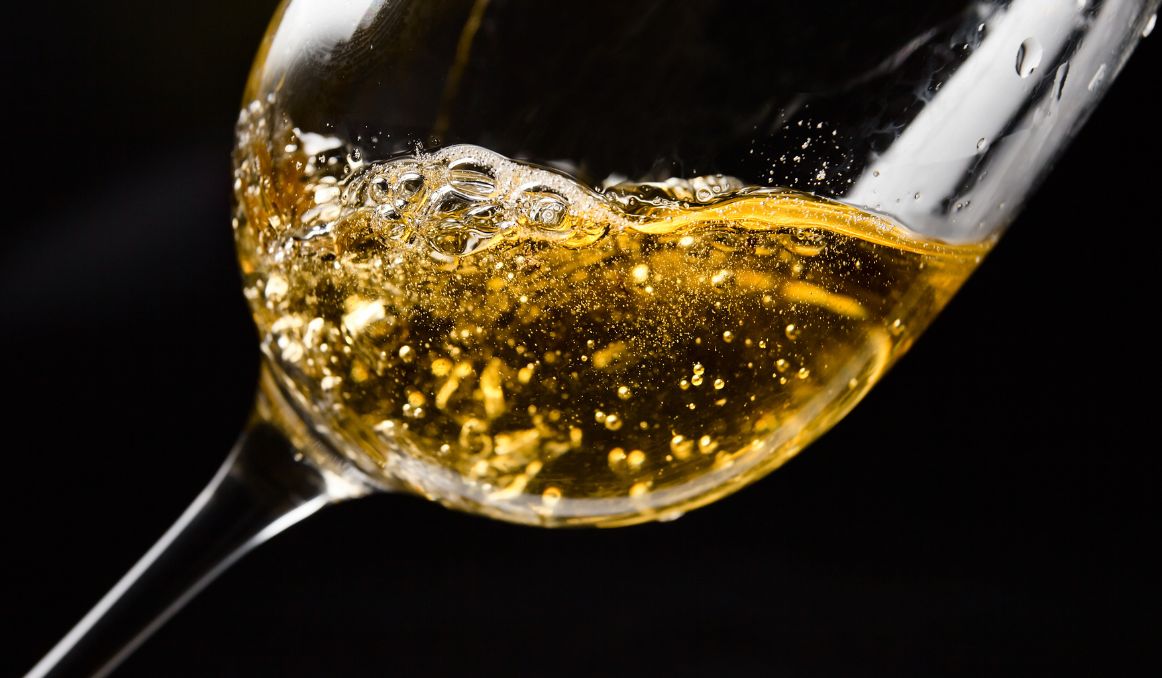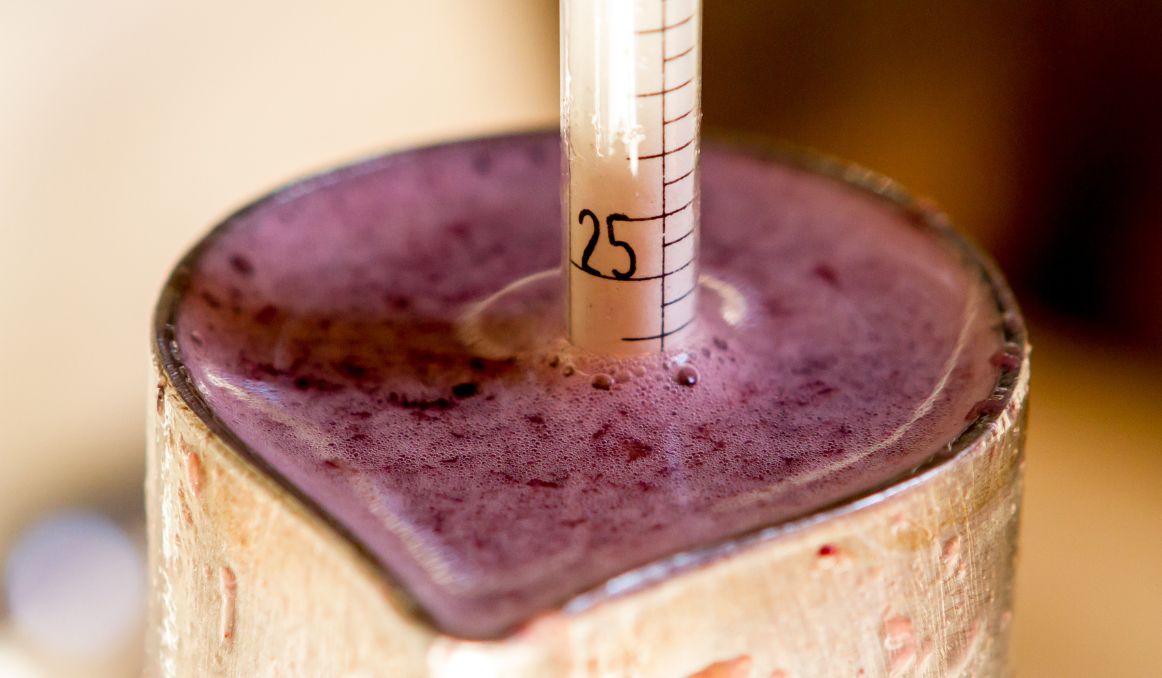What Does Residual Sugar Mean in Wine?
Residual sugar in wine, also known as RS, is whatever sugar is leftover in the wine after fermentation has completed. Much of the RS depends on both how much sugar is in the grapes to begin with, the alcohol tolerance of your yeast, and when the winemaker stops fermentation.
Let’s talk about it.

The Winemaking Process
What many don’t realize is that while wine can be made from virtually any grape, any fruit in fact (hello, fruit wine), most wines are made from especially sweet grapes.
Wine grapes are much sweeter than table grapes.
Why?
The sugars!
The key to making any fermented beverage is the sugars because the end goal is alcohol production, and to get alcohol, you really do need sugar.
Low Sugar Equals Low Alcohol
Sure, you can make a very low alcohol beer or cider with a starchy grain or fruit, like, say, un-toasted wheat or even apples, like our ancestors did. But you know what our ancestors were getting?
A nutritious beverage to go with meals.
That’s right.
The early goal of making ales, wines, and ciders, was not to produce a high alcoholic beverage that would get everyone a nice buzz at an evening gathering.
Rather, the goal was to produce a beverage that could be drunk by everyone in the family at every meal, for hydration and nutrition purposes.
Think about it.
Since about as early as men and woman started domesticating animals and developing land, they have also been irrigating that land, diverting rivers, and using main water sources for things like cleaning household items and clothes as well as dumping waste.
Which means that any society living downriver from a society dumping waste would be exposed to the toxins now in the water.
That means illness, disease, and even death.
Once people figured out they were getting sick from the water upstream, they had to quickly figure out how to avoid those toxins.
Alcohol was a miracle solution.
All they had to do was ferment their beverages, and they had clean drinking water to provide their families.
This solution did not require much alcohol.
Yeast, the primary, essential, ingredient in any fermented food, can work with any fermentable carbohydrate – starches, sugars, or fibers – but it prefers sugars.
Thus, when it is presented with starches, it will “make the best of a bad situation.” Further, most yeasts in the wild that would be attracted to those carbohydrates that are lower in sugar have a lower tolerance to alcohol, so they will either finish fermenting more quickly and lie dormant or they will die off, leaving the end result to be a beverage lower in alcohol.
This process explains why early ales had an ABV of around 1 or 2 percent.
Early wines are a bit different. They actually had a much higher ABV, closer to 15 or 20 percent, because there were actually fewer starches in grapes and no water to dilute the alcohol.
To mediate this high alcohol, children would be given “watered down wine,” a diluted version of what adults were drinking, which was still safe to drink thanks to the alcohol content.
In the end, it all comes down to the sugar content, and wine has a lot of sugar to work with.
Sugars in Wine

The sugars in wine are two of the easiest to ferment for yeast.
Yeast seems to prefer maltose, glucose, and fructose, in that order.
Maltose is the sugar that comes from malted barley.
In order to make an ale with a higher ABV, much higher than our ancestors were drinking, brewers discovered the art of malting barley.
Malting, or roasting or toasting, a grain, converts the starches it the grain to sugars, specifically maltose.
Yeast, then, will treat malted barely quite differently than it will treat fresh barley, providing an ABV closer to 8 percent if not even higher, depending, of course, on the sugar content.
Grapes are naturally high in glucose and fructose.
Glucose is the most abundant of all monosaccharides, or simple sugars.
Fructose is the fruit sugar, also a monosaccharide, found most commonly in plants and honey.
The only difference between the two structurally is that glucose is what is known chemically as an aldehyde and fructose is a ketonic. Both, in their natural state, absorb directly into the bloodstream and both ferment well with yeast.
They are, in essence, easy to digest both for humans and yeast, which explains why they are the sugars in wine.
Residual Sugar in Wine
Residual sugar, then, is whatever is leftover after fermentation is done.
To make wine, a winemaker will find the sweetest grapes available and then choose for flavor and color in order to make whichever particular wine they are making.
Then, they will choose their yeast according to the dryness they seek in the wine and the ABV they hope for.
Some yeasts can tolerate much higher ABV, which means they will produce a much drier wine.
Sweetness and dryness are opposites in wine, and levels depend on how high the alcohol content is.
The more alcohol, the less sweet and the drier the wine will be.
So, as yeast begins to ferment, it will consume the sugars in the grape juice, or must. If you have a yeast that tolerates lower alcohol content, it will stop fermenting once a certain ABV has been reached and lie dormant. The residual sugar, or RS, will be much higher in this case.
In contrast, if you have a yeast that can tolerate a higher ABV, it will ferment until almost all the sugar has been consumed, and then your RS will be much lower.
Some winemakers also prefer to control their ABV and they will stop fermenting by, for instance, lowering the temperature. Others prefer a fortified wine, so they will stop fermentation by adding liquor, which will both leave a higher RS and add a higher ABV.
As you can see, there are many approaches to controlling both residual sugar, ABV, and the yeast in your wine.
And as usual, it all comes down to experimentation.
Cheers!
Passionate about the wine and/or beer making process? So are we! If you’re interested in finding out how you can use our technology to control fermentation and monitor your yeast, save work hours and improve the cost-efficiency of your business, drop us a line at [email protected] or check out our product pages:
- Oculyze FW (Fermentation Wine) Yeast Cell Counter App + Hardware
- Oculyze BB 2.0 (Better Brewing) Yeast Cell Counter App + Hardware
Also, you can now get access to a fully functional demo account to test your yeast via our Web App. Completely free of charge and with no commitment to purchase.
Sources:


